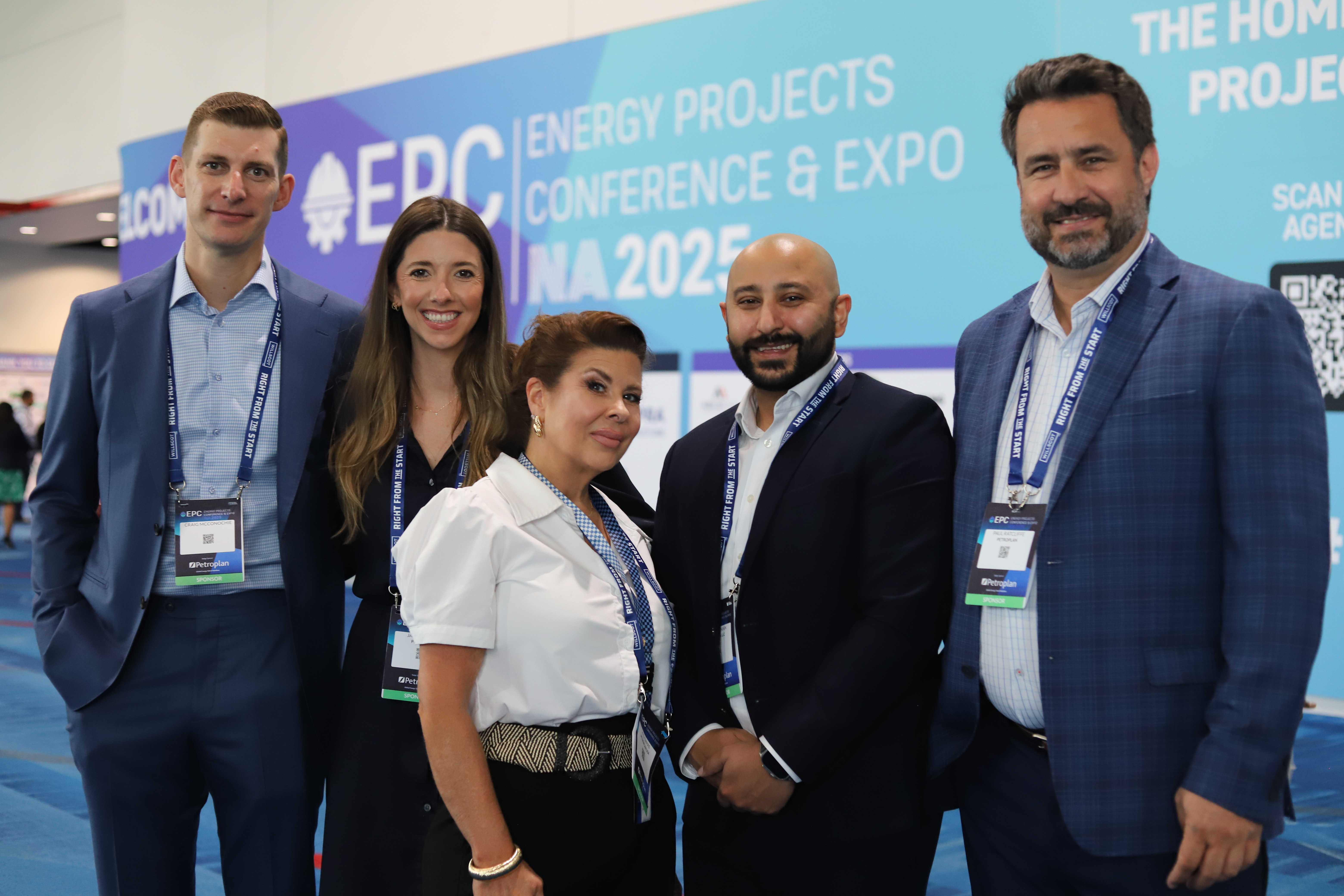January 31, 2018

Establishing connectivity with the right talent for digital transformation
The oil, gas and energy industry is no different to many industry sectors that are taking advantage of the advances in business performance by utilising automation, digitisation, Big Data and artificial intelligence. While hydrocarbon fuels still represent a large percentage of focus for the industry, this drive towards digitisation will result in greater innovation and improve efficiency and productivity in the field.
For oil, gas and energy companies to implement their digital strategies, they require a growing number of professionals with experience in delivering the technical change required. Disciplines span the management of data collection in the field, analysis of that information, connection with ERP systems and, of course, protecting the data and infrastructure.
The challenge for the sector is that the acquisition of digital and IT professionals will likely require a new approach to recruitment. The skill sets may well reside with a new generation that has a different worldview and perception of the energy market to that of the workforce traditionally active in the sector.
There is a combination of issues to address in the sector to prepare for these changes: advance the required skills in the present operational workforce – coding may become the watchword for the industry rather than engineering – and recruit fresh talent from outside the industry. New job titles for the industry include data scientists, software engineers, cyber security specialists, cloud architecture analysts, control networks (SCADA) experts, robotics and artificial intelligence engineers, to name just a few.
The requirement for younger, technologically savvy individuals is compounded by the natural but significant attrition from the industry of retirement-age oil and gas professionals with the potential loss, not of digital skills, but of process know-how that technology will enable and advance.
The impact of this impending knowledge loss and digitisation is gathering momentum. Now is the time to recruit new talent from a generation of digital natives who may not have considered the oil and gas sector as a potential employer.
In 2017, Petroplan produced its second Talent Insight Index, designed to be a barometer of the sentiment of oil, gas and energy professionals. A key finding was that this digital talent may not be looking at the oil and gas sector as a career choice; however, there was recognition from rank and file oil and gas careerists that the need for technology skills is growing.
From the survey respondents, there was clear interest in training as a benefit. Working in an industry characterised by its engineering prowess and mobility, this group is adept at learning new skills. Our hope is that the industry will invest in upskilling experienced energy professionals, as well as unearthing talent outside the energy sector.
Key oil and gas industry figures have commented on the challenges of attracting younger, digitally-conversant talent into the sector. In a speech in 2016, Bob Dudley – Chief Executive of BP – forewarned that the oil and gas industry was in jeopardy of falling behind the competition to attract talented younger employees. He cited a McKinsey research study that revealed the industry sector where digital natives (also referred to as Generation Y or millennials and born between 1982 and 2004) would least like to work is the oil and gas sector – with 14% of respondents admitting they would not seek a career in the sector, due to its perceived negative image.
In a further study (from EY) the news got worse, with the generation after millennials – commonly referred to as ‘Z’ – rejecting the idea of oil and gas careers.
Millennials are often mistakenly considered to be recent university graduates, but in reality, they are now occupying junior to mid managerial roles and are beginning to ascend into executive ranks. According to McKinsey’s report, millennials will constitute most of the US workforce by the early 2020’s. This generation demonstrates positive values around sustainability, ethical work structures and accountability for diversity, equality and technology. They will come to define corporate culture in the near future.
Some of the criticism levelled by millennials towards working practices in the oil and gas sector is that there is typically a rigid hierarchical management infrastructure where innovation and ideas are overlooked, a lack of employee diversity and slowness to embrace newer ways of operating, including remote working and flexible time management. Most importantly for the sector, their perception is that there is an under-appreciation of the potential digital technologies and what they can deliver to the business.
Millennials favour a workplace built around tasks and projects, rather than top-down decision making, where teams may have no formal leader, instead leaving decision making to whoever has the most relevant expertise.
A very recent study by the World Economic Forum, cites 50% of the world’s population as under 30. They view climate change and conflict as the most important issues. Their view is that technology will create jobs, not remove them. There is high youth unemployment, though, across many countries – Latin America records 13% youth unemployment and European countries such Italy, Spain and Greece 35%, 38.7% and 43.3% respectively.
There are opportunities here for industries that are prepared to invest in this generation and demonstrate how their work contributes to sustainability and puts technology and entrepreneurship at the centre of their operations.
Millennials have ambitious aspirations and want rapid career progression, with a plan for continual learning and personal development as well as an expectation of immediate feedback – with a more crowd-sourced approach than the traditional line manager model. Organisational nimbleness and fluid team-working characterizes their employer of choice. The ability to innovate with a rapid, iterative, fail fast, test-and-learn approach is the preferred mode rather than the old test to destruction method with many layers of approval.
Genuine work/life balance is a priority for the millennial worker – location-agnostic employment is characteristic of the digital native generation. They have a freelance attitude that brings a readiness to change employers if expectations are not met.
The employer brand has real resonance with work entrants. In a study by Cone, 76% of millennials surveyed were seeking employers with corporate social responsibility(CSR) values that matched their own and most would consider leaving an employer whose values no longer matched their expectations. It will be important for energy companies to communicate to millennials how their transformational strategies will lead to a cleaner environment, so that potential hires don’t feel like they are faced with a moral dilemma.
Bob Dudley, for instance, emphasized that the industry must do a better job of communicating its commitment to help the wold shift towards cleaner forms of energy – or risk losing the young people needed to lead the transition. “We need people who are curious; people who can challenge the status quo and come up with new solutions”, he said.
At Petroplan, we have seen that when it comes to attracting digital natives into the oil and gas industry, many companies are struggling – literally and metaphorically – to connect.
It may be easier for more regionally focused oil, gas and energy companies to attract millennials. Organisational agility and the ability to connect more directly with their local talent base will give advantages. A great example of this is the MOL Group in Hungary. They are employing a transformation strategy to attract new talent in both digital and engineering – to replace the outgoing baby boomers. Some of the principles at the core of this are intent on ensuring the culture focuses on continual development, promotional advancement, gender parity and support for innovation.
MOL recently announced its future headquarters are to open in 2021 and will be designed by UK firm Foster and Partners. The design is set to rival the best working environments in Silicon Valley in terms of sustainability, ergonomics and inter-connectivity, and will reflect MOL’s vision and commitment to hiring the best millennials.
Larger firms can demonstrate how millennials can be part of the move to cleaner energy and improving work processes to build a sustainable future and create ‘conscious capitalism’. In an article by Petroleum Economist, graduates talk about their experiences of joining an organisation in the energy sector. These entry level joiners felt businesses should build their profiles at schools and colleges, as their experience within the organization was different to their expectation of what it would be like to work there. However, some commented that issues such as flexible working and access to technology still needed to be addressed.
The UK Times’ top 100 list – an acclaimed reference for undergraduates exploring future careers – lists BP, Shell, ExxonMobil, EON, Mott MacDonald and Siemens as potential employers, but organizations in the consulting, public and technology sectors feature more highly. In this year’s rankings, BP has move up 3 places to 26. This is indicative of the potential for attracting talent into the sector with the right communications and experiences for those entering its culture.
In conclusion then, reports, articles and market conversation would indicate that progressive steps towards attracting millennials with skills such as digital know-how, engineering, science and technology is just beginning. More companies – particularly in oil and gas – need to take urgent steps to escalate the changes needed to attract a new generation of professionals. However, with organisations in the sector remaining on graduate employer lists, building workplaces and roles for a workforce with more inclusive values – the race for this essential talent has begun.
<






You can also use your social account to sign in. First you need to:
To connect your social account you must Acknowledge the Terms & Conditions and Privacy Policy